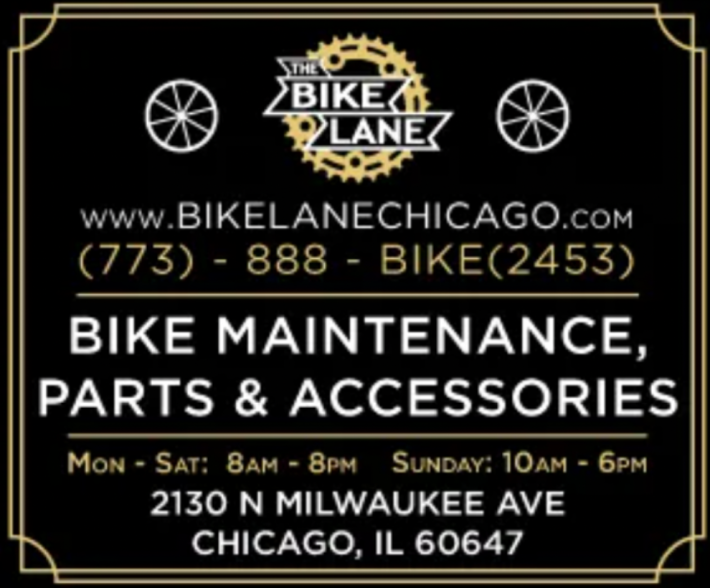
For almost three decades, San Francisco has influenced my POV on how sustainable transportation should evolve in Chicago. Back in 1996 when I was working as a bicycle courier in the Loop, I traveled to SF for the Cycle Messenger World Championships and rode in my first Critical Mass, the global bike parade/protest/party that was first launched there. The following year, Chicago cycling advocates started monthly Critical Mass rides from Daley Plaza.
I've been particularly impressed by how San Francisco essentially banned private cars from Market Street, a crucial transportation and retail corridor. I've suggested we transplant that idea to Chicago's Michigan Avenue. I most recently visited the "City By the Bay" in February 2023, and shared my take on the transportation infrastructure I saw in this Streetsblog post.
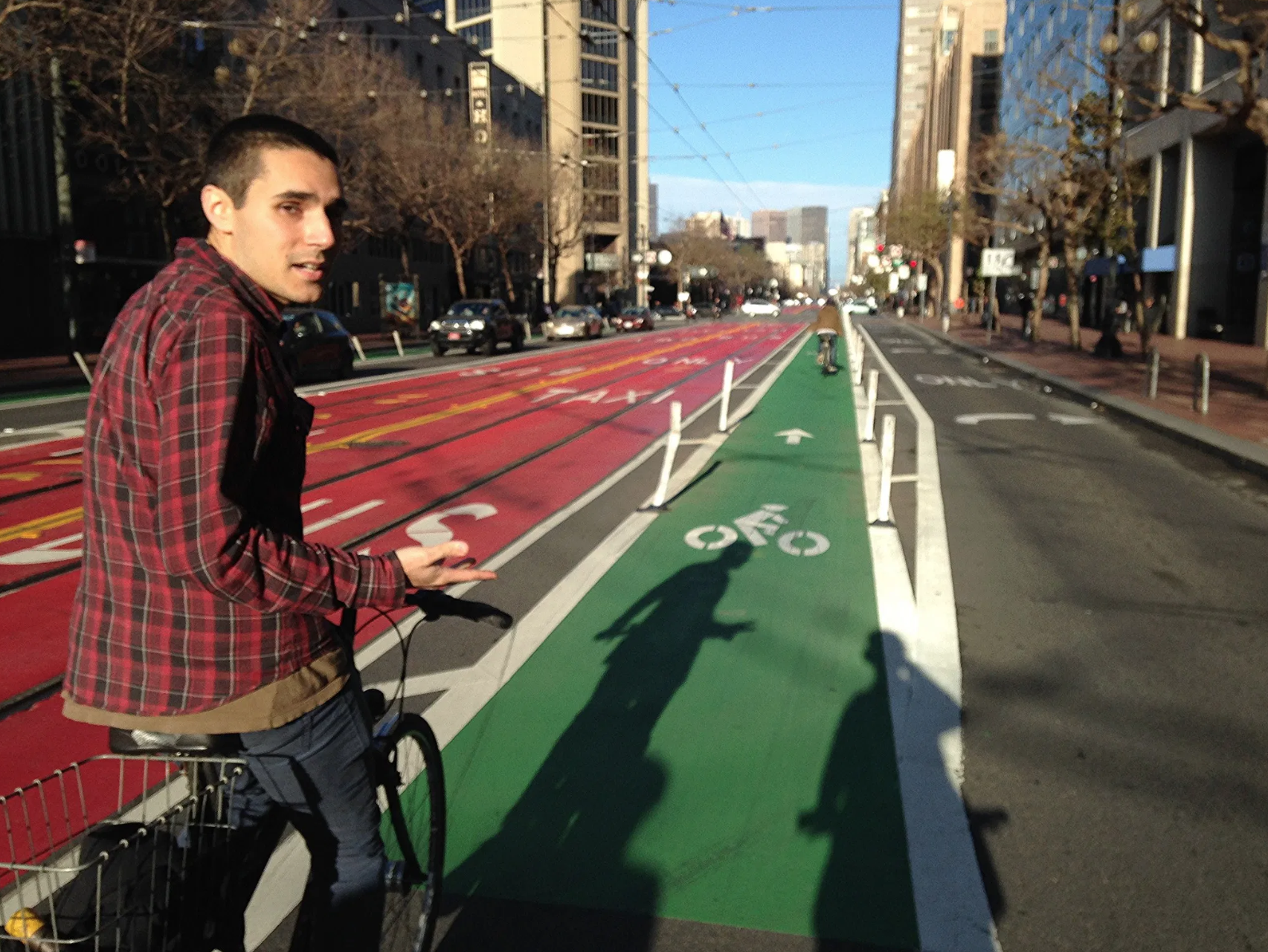
So when current Streetsblog San Francisco editor Roger Rudick told me he'd have a four-hour layover in Chicago during an Amtrak journey, I offered to turn the tables by letting him comment on local walk/bike/transit developments. We met up this morning for a bike tour from Union Station, where nowadays there are not one (Clinton Street) but two (Adams Street) Divvy bike-share stations.
I took Roger on the above, roughly four-mile route, mostly on lower-stress protected bike lanes and off-street paths. I warned him that these are not the typical conditions for Chicago cycling routes. From the train station, we rolled north on the two-way Clinton Street protected bike lane which, like virtually all downtown PBLs, was upgraded with concrete curb protection last year.
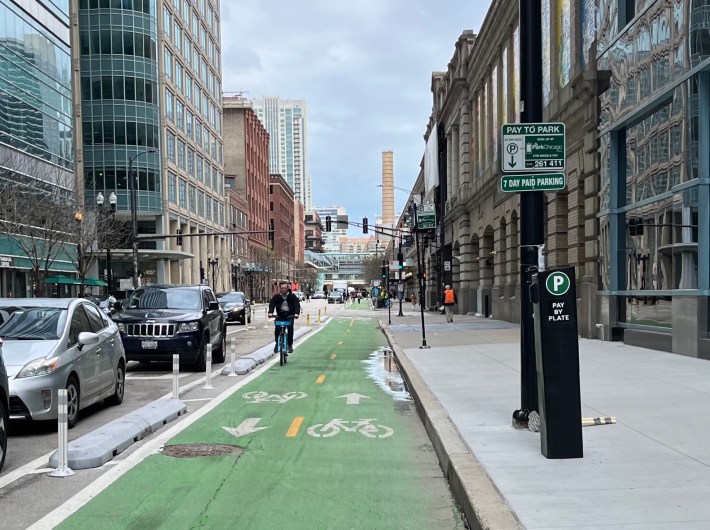
After passing the Ogilvie Transportation Center, a major Metra commuter rail hub, 500 W. Madison St., we headed east on Washington Street and crossed the Chicago River. Then we arrived at a giant bus stop next to a concrete-protected bike lane, part of the Loop Link express bus corridor. I explained that the route was billed as bus rapid transit when it opened in 2015, but it has only seen modest bus speed improvements since then. That's because, unlike real BRT, Loop Link doesn't have pre-paid boarding, vehicles with multiple doors you can enter, or camera-enforced bus-only lanes.
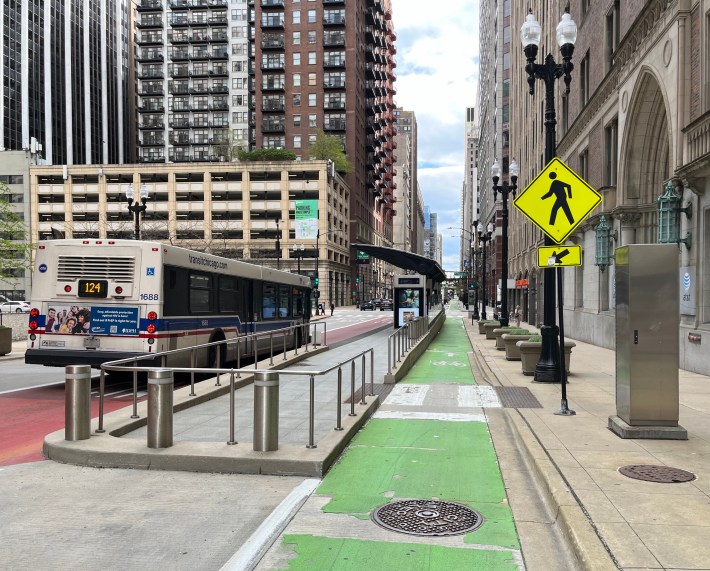
Still, Roger said he was impressed that the station was protected by sturdy-looking metal bollards. Tragically, on March 16, a driver who veered into a San Francisco bus stop killed an entire family, sparking an outcry for better protection of transit users from motorists.

Also, as we stood at the station, a Chicago Department of Transportation worker drove by in a miniature street cleaner, sweeping garbage and debris from the bikeway. I swear I didn't check in with CDOT before our bike ride to prearrange this encounter. In fact, I didn't even know our city had these gadgets, but I'm pleased to see we do.
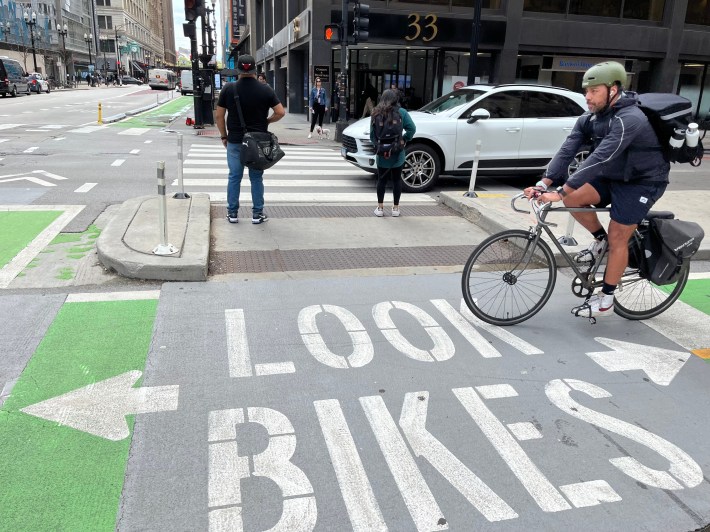
From there we continued east to Franklin Street, where CDOT built a (sort-of) protected intersection treatment. We then rolled north on Dearborn Street in a two-way protected bike lane, then north to Randolph Street, where there's another (kind-of) protected intersection.
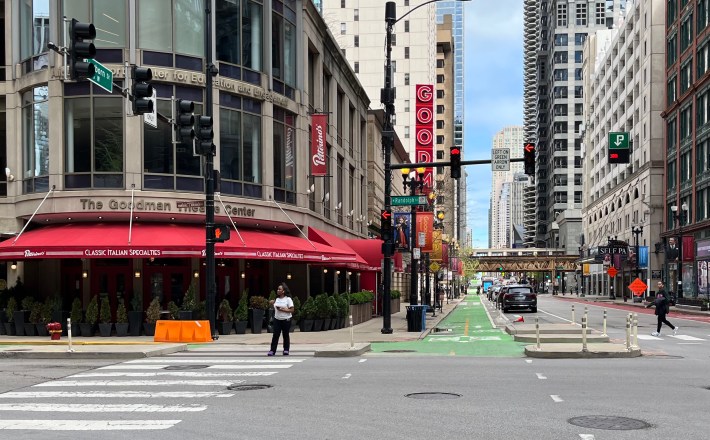
We continued west on Randolph, passing by parts of the street with concrete protection for people on foot and bike. We passed other intersections with sidewalk extensions and pedestrian islands that are only made up of paint and flexible plastic posts, a much less effective way to prevent drivers from striking vulnerable road users.
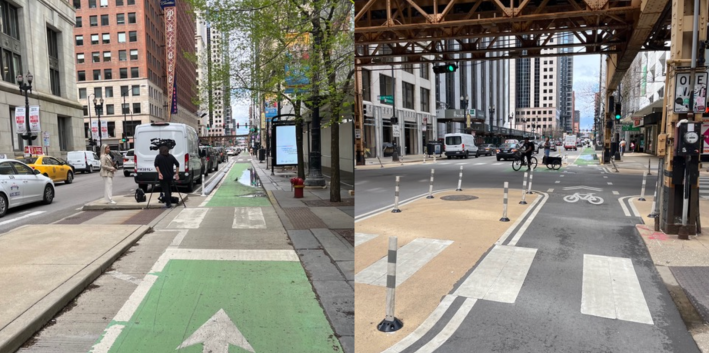
The we pedaled north a few blocks on Franklin Street, which has three northbound mixed-traffic lanes that drivers often speed down, but only has a non-protected bike lane.
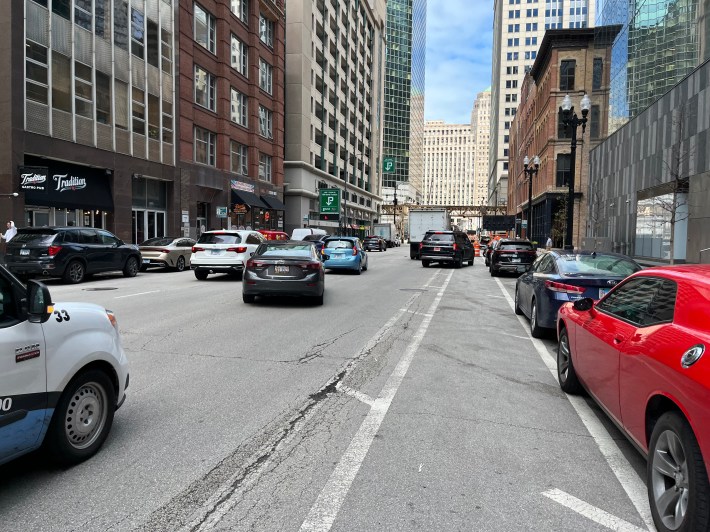
At Wacker Drive, we took a ramp down to the Chicago Riverwalk and started pedaling east. Unfortunately, on two occasions security guards flagged us down and politely told us that bicycling is not allowed on the path. In reality, the riverwalk was originally funded by the federal government as a bike-pedestrian corridor, and the facility is labeled on CDOT's Chicago Bike Map as an "Off-Street Trail". I thought Streetsblog successfully helped dispel the claim that biking isn't permitted there, at least during non-busy times like this morning, and that the matter was resolved years ago, so this was a surprise.

I'll look further into what's going on with the current spurious riverfront cycling ban in the near future. (Don't worry, while I've gotten pretty fired up about this subject in the past, I recently mended fences with my former opponent on the issue, 42nd Ward alder Brendan Reilly, the local City Council member. So I'll make sure to keep the tone of any future coverage reasonably cordial.) But Roger and I ultimately decided to comply with the inaccurate instructions, and walked our bikes the rest of the way to the lakefront.

From there we rode south a bit to a little-known sidewalk bike route that runs west from lakeside Cafe Michelle to the Lakeshore East development. Look at the above Google Map to get a sense of how to find it.
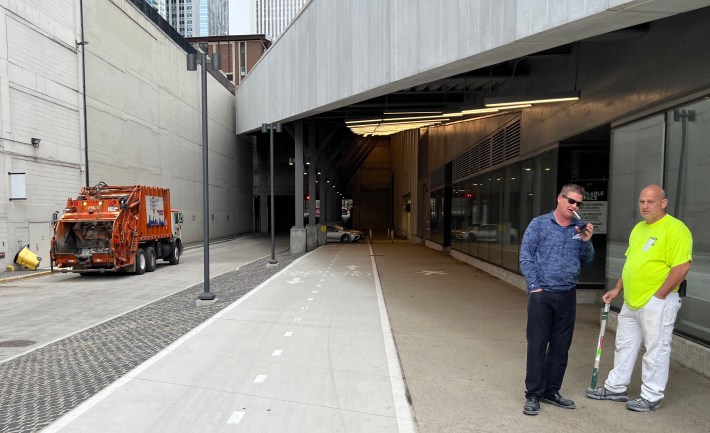
After that we took Randolph west to Wabash Street, where we refueled at the Oasis Cafe, 21 N. Wabash St., a longtime Middle Eastern restaurant hidden in the back of a jewelry store. We shared war stories about running our sustainable transportation news and advocacy websites. Then we made our way back to Union Station, mostly on Randolph and Clinton, so he could catch the California Zephyr train home.

I asked Roger to give me some feedback on the infrastructure he saw today. "Like so many cities, Chicago is obviously a work in progress," he replied. "There were blocks that felt very safe and very secure, where the bike lanes were physically protected by strips of concrete. I saw some protected intersections that were quite nice, and that felt like, 'OK, a little kid could ride here, or somebody who's not confident on a bike.' But then you're immediately – voom! – disgorged into three lanes of moving traffic with no protection, sometimes not even a striped bike lane."
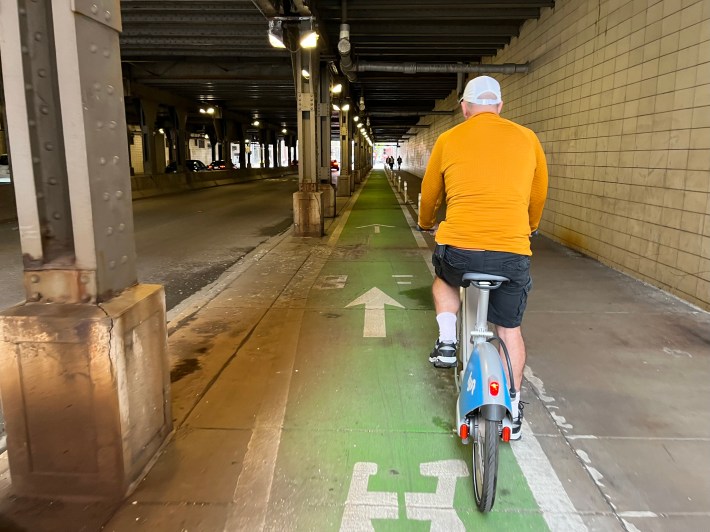
"But there are other things that are sort of universal, that I haven't seen in the U.S., although New York is starting to do them," Roger added. "Anyone from the Netherlands would tell you the bike lanes are too narrow... Basically [U.S. cities] just have to do more, keep going, and follow the example of Paris. Just say, 'Hey, this is the direction that we're taking. We don't need to look at it district-by-district. We don't need to get permission from the local City Council member.' Just get a warehouse full of the pieces of concrete that you need, and start installing them on every single street, until every street in the city is safe."
My thoughts exactly! Chicago Mayor Brandon Johnson, please take note.
Did you appreciate this post? Please consider making a tax-deductible donation to help Streetsblog Chicago keep publishing through 2025. Thank you.






